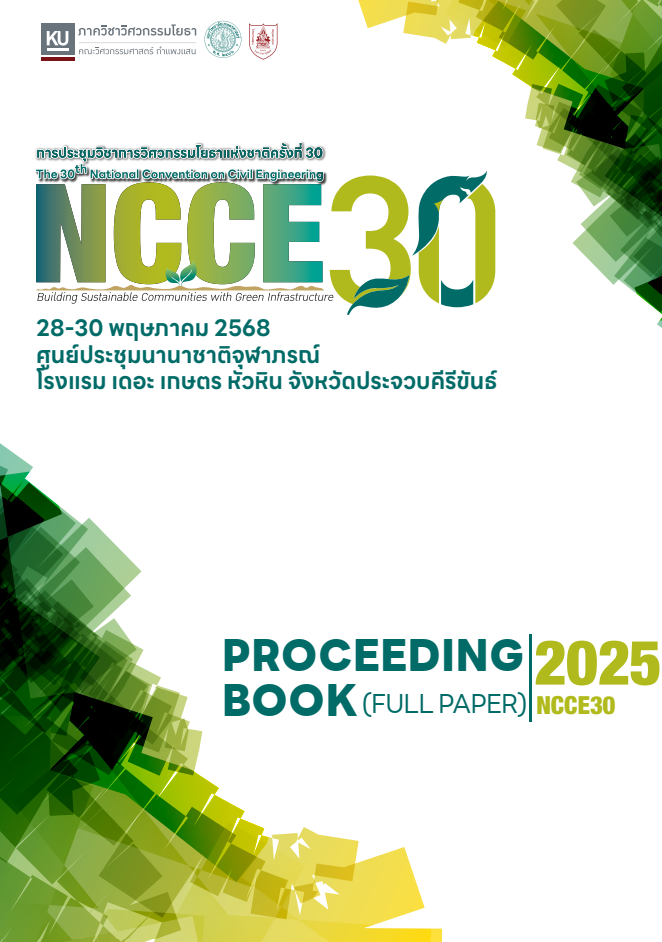Performance Evaluation of Reactive Powder Concrete using Local Materials
คำสำคัญ:
Reactive Powder Concrete, Ultra-High-Performance Concrete, low-cost concrete, mechanical properties, fiber-reinforced concreteบทคัดย่อ
Reactive Powder Concrete (RPC), a class of Ultra-High-Performance Concrete (UHPC), offers exceptional mechanical properties and durability, enabling reduced structural cross-sections, extended spans, intricate designs, and lower maintenance needs. Despite its potential, RPC remains in the early stages of development, with its performance highly dependent on material selection, mix proportions, mixing techniques, and curing methods. In Thailand, RPC is still relatively unexplored, necessitating further research using locally available materials. Additionally, the high production cost remains a significant barrier to its widespread application.
This study experimentally investigates the mechanical properties of RPC using local materials and designed to reduce material cost. Compressive strength was evaluated at 3, 5, 9, and 28 days, while flexural and splitting tensile strengths were assessed at 28 days. Additionally, predictive models from the literature were examined for their accuracy in estimating RPC’s mechanical properties. Finally, correlations between compressive strength, splitting tensile strength, and flexural strength were analyzed.
This study experimentally investigates the mechanical properties of RPC using local materials. Compressive strength was evaluated at 3, 5, 9, and 28 days, while flexural and splitting tensile strengths were assessed at 28 days. Additionally, predictive models from the literature are examined for their accuracy in estimating RPC’s mechanical properties. Finally, correlations between compressive strength, splitting tensile strength, and flexural strength are analyzed.
ดาวน์โหลด
เผยแพร่แล้ว
วิธีการอ้างอิง
ฉบับ
บท
การอนุญาต
ลิขสิทธิ์ (c) 2025 Engineering Institute of Thailand

This work is licensed under a Creative Commons Attribution-NonCommercial-NoDerivatives 4.0 International License.
บทความที่ได้รับคัดเลือกนำเสนอในการประชุม NCCE ถือเป็นลิขสิทธิ์ของวิศวกรรมสถานแห่งประเทศไทย ในพระบรมราชูปถัมภ์ (วสท.) (Engineering Institute of Thailand)


